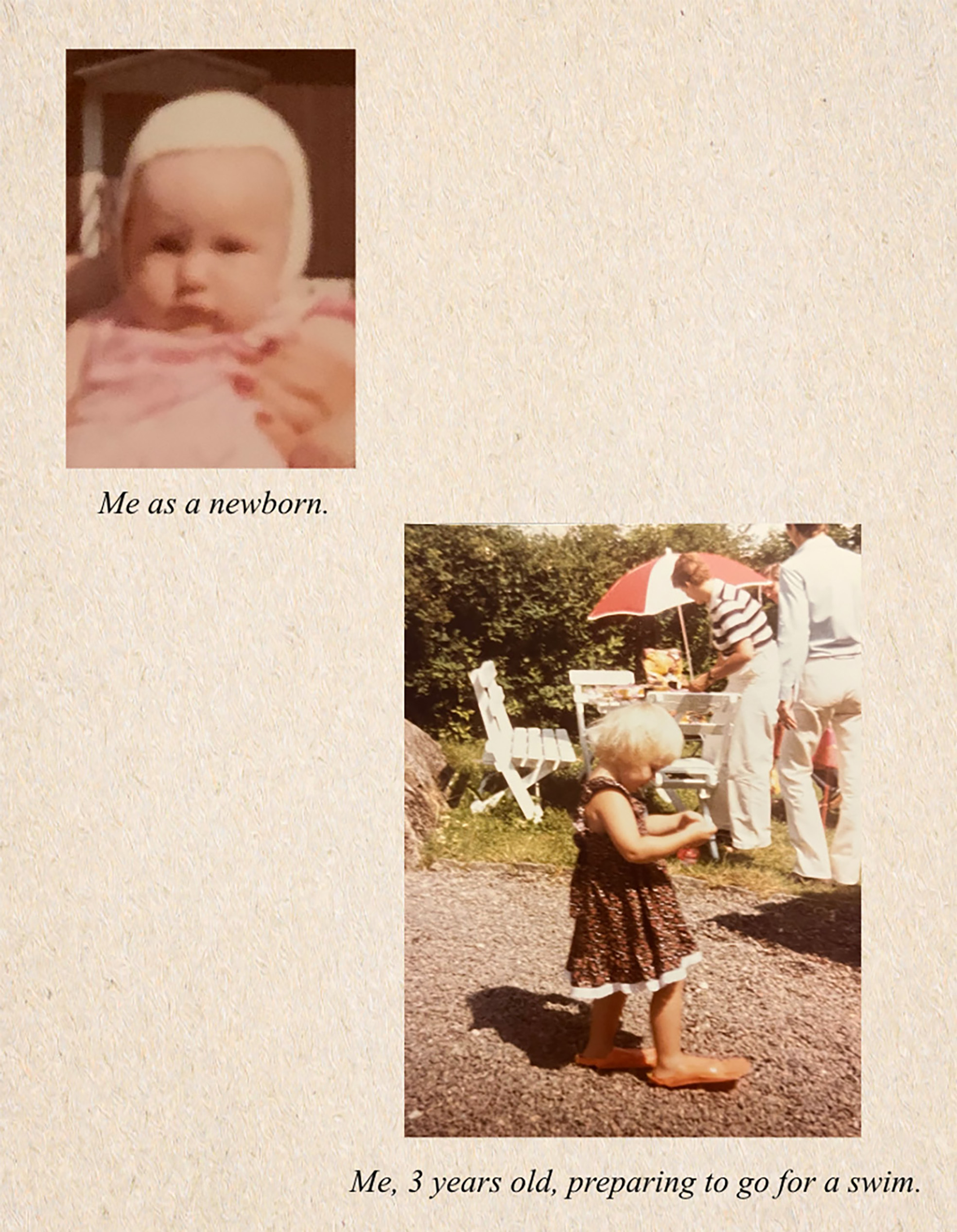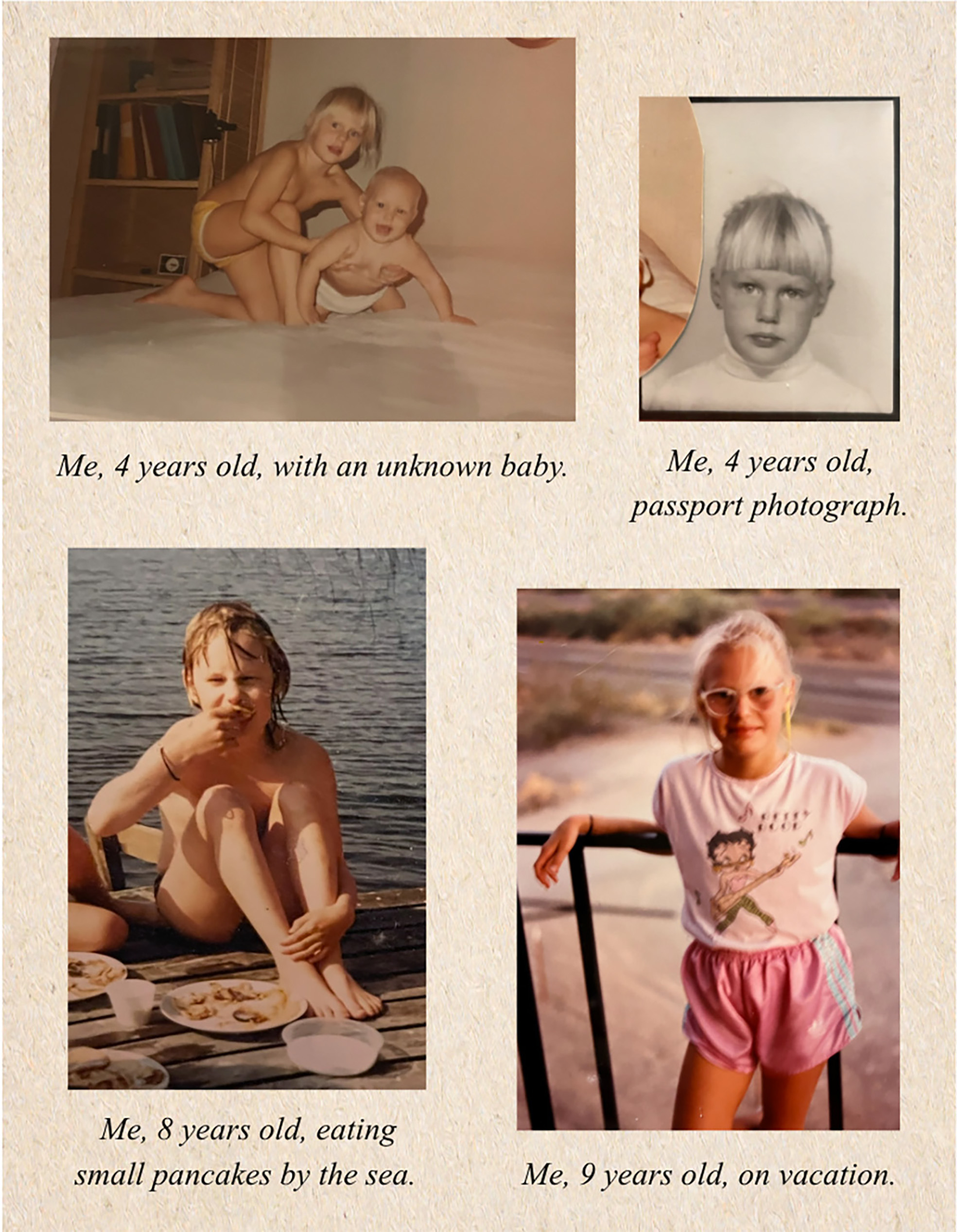

True Stories and Other Fairy Tales - The Power of Photographs
Once at a family event, I witnessed a young woman show photos of her grandfather whom she had only met when she was a child. Based on the photos, the woman told anecdotes about the grandfather and the occasions from when the photos were taken. At the same event was the woman’s grandmother, the grandfather’s widow. When the woman had finished talking, the grandmother, a bit embarrassed, explained that the grandfather was not really described “correctly” and that the photos were not taken where the woman had accounted for but in a completely different place. No one seemed to validate the grandmother’s amendment. And even more surprising, no one seemed bothered by the strange thing that had just happened. That a person based on photographs tells an apparently made-up story that another person opposes without anyone else objecting.
There are many factors that influence how we perceive information when a story is told. For example, the receiver’s experience and knowledge, their relationship to and confidence in the storyteller, as well as how trustworthy the story seems. Anyhow, I think the most intriguing part of storytelling is when verbal narratives interact with photographs. The impact that photography has, isn’t for me that I’m being tricked into thinking the photograph shows the truth. Rather that I agree to let photos act like evidence even though I know that’s not at all or always the case, and yet I go along with it. However, on many occasions, photographs can enhance the content of the verbal account and besides that create their own powerful stories.
What happened at the event drew my attention to, truth as ambiguous and quite complicated, sometimes also unpleasant and painful. While a made-up story can be told as simplified as we like, whatever suits the occasion in the best way. According to historian Yuval Noah Harari, the most successful narratives are simplifications, narratives not entirely truthful to the event that is told. Since a simple story is easy to understand and when we understand, we feel good about ourselves.[i] Still, it is not excluded to tell the truth in a simplified way, even if it is rarely objective. After all, part of the truth also is what is not told, regardless of the reason why it is excluded from a story. But let’s focus on what is actually being told.
I would therefore like to tell you a true but simplified and shortened story of my childhood. I kindly welcome you to reflect on whether the photographs enhance my otherwise rather mediocre life.

When I got older, around the age of nine years old, I started enjoying being the youngest child because no one really had time to look after me. I could therefore do whatever I wanted, I was free, and I loved it. Unfortunately, it probably contributed to me not passing school, but I was very good at other things, for example sports such as tennis, horse jumping and football. Today, as an adult I am not very fond of traveling but as a child it was the best thing I knew, because then I didn’t have to go to school. Yet, one thing I found difficult about traveling was the expectation to suddenly eat food I hadn’t tried before. Therefore, the only thing I ate when we were abroad was pancakes. To be honest, during part of my upbringing, small pancakes, “plättar” in Swedish, was the only food I ate at home as well. Which resulted in the family’s nickname for me being Plätten, which my father still calls me, a rather improper nickname for a grown woman.
I could continue telling you about my teenage years but then it will turn into horror stories, and I don’t think anyone has the need to see photographs of a 13-year-old me trying to look like Uma Thurman’s character in Pulp Fiction. Besides, if I remember correctly, that phase was probably a very short period.

Within the same study another test group consisting of an equal number of participants were, instead of looking at photos, reading an exact account of the original and the manipulated photo thinking all four stories were real events. In this group, on the third occasion, eight out of ten participants thought they remembered the event of the fake hot air balloon ride.[ii]
It seems like both verbal and photographic storytelling have the ability to captivate. Which makes me think of what Harari says makes us feel good about ourselves; not entirely truthful simplification narratives that are easy to understand. In my opinion that is a description which can be used when defining what a photograph is.
Regardless of who tells a story and how they do it, the receiver will always interpret and remember it in different ways. So, there are no true stories and maybe all fairy tales are true. Oh, I almost forgot. Even if it doesn’t have to imply that I made up the story about my childhood, I still want to confess that it’s not me in the photographs.
[i] Marchese, David. Yuval Noah Harari Believes This Simple Story Can Save the Planet. The New York Times Magazine. 2021-11-07. https://www.nytimes.com/interactive/2021/11/08/magazine/yuval-noah-harari-interview.html (Accessed 2023-03-28).
[ii] Garry, Maryanne, and Matthew P. Gerrie. When Photographs Create False Memories. Current Directions in Psychological Science : A Journal of the American Psychological Society. Vol. 14, no 6, 2005: 321-325. doi: 10.1111/j.0963-7214.2005.00390.x
Images: Mette Hultesjö